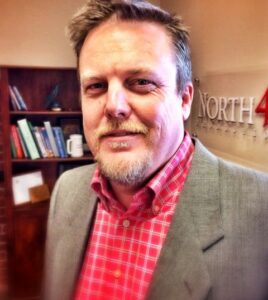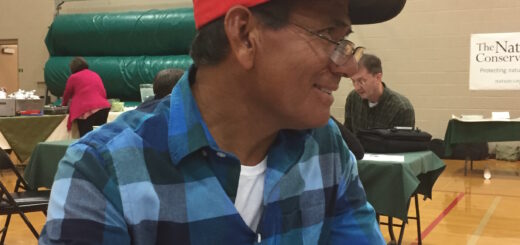Wildfire Project Pt 2: North 40 team provides the creative genius behind effort to solve our wildfire challenge
The creative engine behind The Wildfire Project, a multimedia presentation designed to inform and inspire local efforts to reduce the risks of wildfire, is North 40 Productions, a small, homegrown company of mostly self-taught creatives.
North 40 does a lot of inspired commercial marketing work that pays the bills (most people will remember the Woody Goomsba commercials for the Leavenworth Chamber) and that works helps fund their other passion — purpose-driven documentaries that make this a better place to live. It’s a close-knit and talented group that includes executive producer Jeff Ostenson, producer Charles Atkinson, creative director Oly Mingo, audio engineer Chad Yenney and wordsmith Steve Scott.
Pedal Driven explored the conflict but more importantly focused on how people were finding common ground in other places like Bend, Oregon and developing partnerships and win-win solutions. That film created the environment in which a new era of cooperation and collaboration began to flourish in North Central Washington. After Pedal Driven, Howell left to pursue other interests and is now the technical services and artistic director at Icicle Creek Center for the Arts. Ostenson formed North 40 Productions.
The Wildfire effort has been four years in the making, Ostenson told me, when he got acquainted with the work of photographer John Marshall, who had dedicated years to documenting the changing nature of forests in the region, and Dr. Paul Hessburg, the foremost fire ecologist in the region. Ostenson was looking for ways to create a documentary that would describe what was happening in our landscape as well as inspire change. The massive fires of 2014 literally lit a fire under community leaders, who were searching for answers about how to deal with this issue.
Our communities are profoundly impacted by wildfires. The destruction of homes, timber and livestock is well documented, but there are also impacts on the health of citizens because of breathing smoke for days or weeks, plus the economic havoc that is created when communities that rely on tourism are virtually shut down.
The Wenatchee Valley Museum and Cultural Center, under the direction of interim executive Jim Russell, began work on a wildfire exhibit and a forest learning program at Squilchuck State Park that was launched in the fall of 2015. Russell also brought together a group of leaders to develop a wildfire summit that brought congressional staffers, Commissioner of Public Lands Peter Goldmark and experts for a one-day discussion about creative ways we might solve our wildfire challenge. That was a resounding success, primarily because of the powerful video vignettes developed by North 40 for the summit. Those video clips of the Sleepy Hollow fire and aftermath, combined with the science presented at the event, created great momentum for addressing our wildfire challenge.
Sara Rolfs is the Wildfire Project coordinator and a couple of college interns from the valley — Luke Strahm and Treven Strean — have played a role in the endeavor. The Wildfire Project presentation stitches together the history of fire suppression, the declining health of the forests, and the opportunities that exist for our region to solve the problem. “We don’t have to wait for someone else to solve this,” said Ostenson. “I think we can fix this,” he added. This is a perfect example of the solutions-based work that the North 40 team focuses on. When friends lost homes in Broadview during the Sleepy Hollow Fire, “how do you not take that personally,” Ostenson said.
Ostenson told me that documentaries give people an opportunity to reflect on other perspectives that they may not have considered before. This has become a bit of a lost art in our society these days in which separatism and fear mongering has created divisions rather than built bridges. His hope is that with the work they do, people will be able to gain a greater appreciation for people they don’t agree with and that they’ll be come more tolerant and flexible.
Now that’s what I call creative community building.



